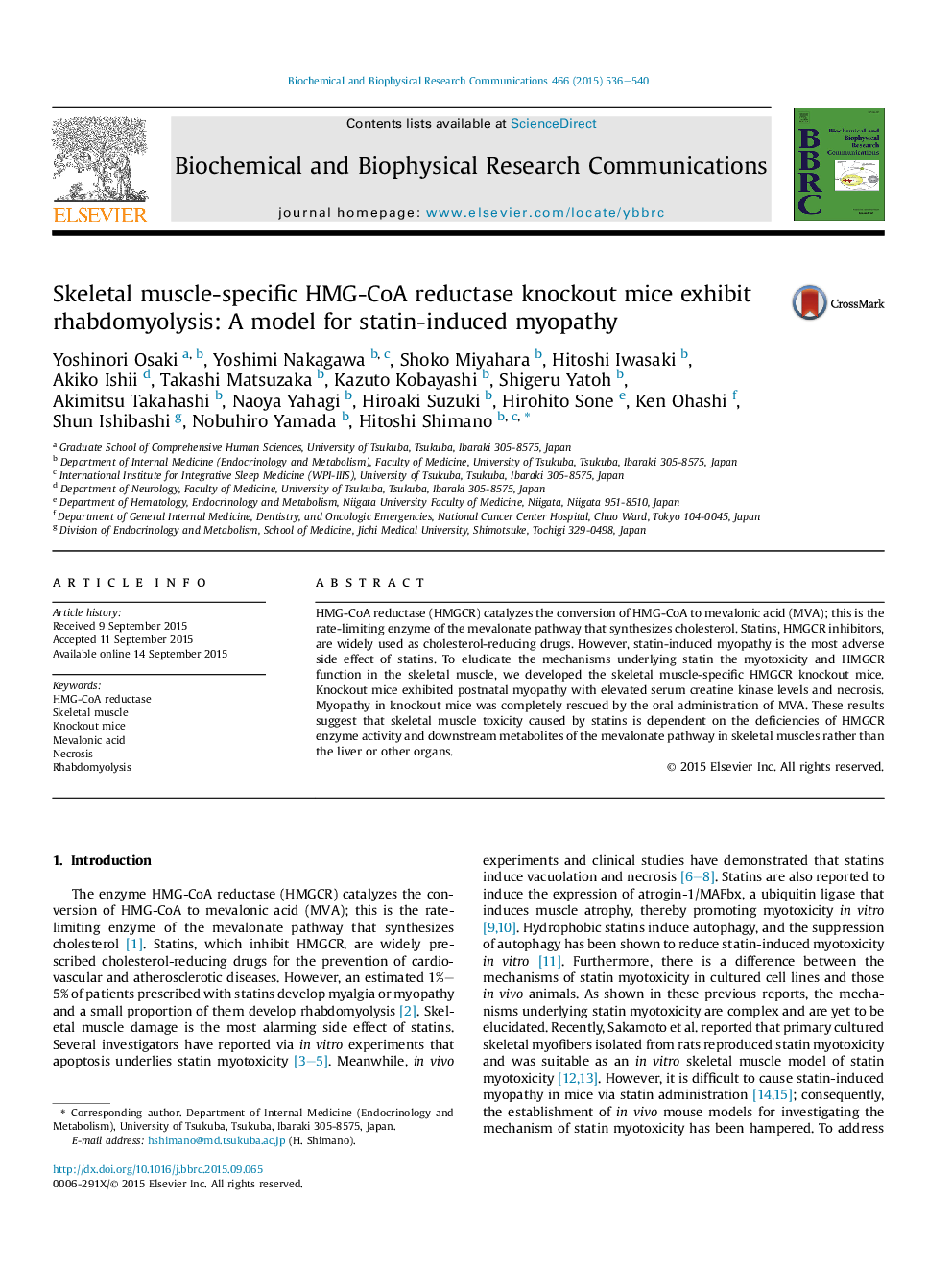| Article ID | Journal | Published Year | Pages | File Type |
|---|---|---|---|---|
| 10750932 | Biochemical and Biophysical Research Communications | 2015 | 5 Pages |
Abstract
HMG-CoA reductase (HMGCR) catalyzes the conversion of HMG-CoA to mevalonic acid (MVA); this is the rate-limiting enzyme of the mevalonate pathway that synthesizes cholesterol. Statins, HMGCR inhibitors, are widely used as cholesterol-reducing drugs. However, statin-induced myopathy is the most adverse side effect of statins. To eludicate the mechanisms underlying statin the myotoxicity and HMGCR function in the skeletal muscle, we developed the skeletal muscle-specific HMGCR knockout mice. Knockout mice exhibited postnatal myopathy with elevated serum creatine kinase levels and necrosis. Myopathy in knockout mice was completely rescued by the oral administration of MVA. These results suggest that skeletal muscle toxicity caused by statins is dependent on the deficiencies of HMGCR enzyme activity and downstream metabolites of the mevalonate pathway in skeletal muscles rather than the liver or other organs.
Related Topics
Life Sciences
Biochemistry, Genetics and Molecular Biology
Biochemistry
Authors
Yoshinori Osaki, Yoshimi Nakagawa, Shoko Miyahara, Hitoshi Iwasaki, Akiko Ishii, Takashi Matsuzaka, Kazuto Kobayashi, Shigeru Yatoh, Akimitsu Takahashi, Naoya Yahagi, Hiroaki Suzuki, Hirohito Sone, Ken Ohashi, Shun Ishibashi, Nobuhiro Yamada,
